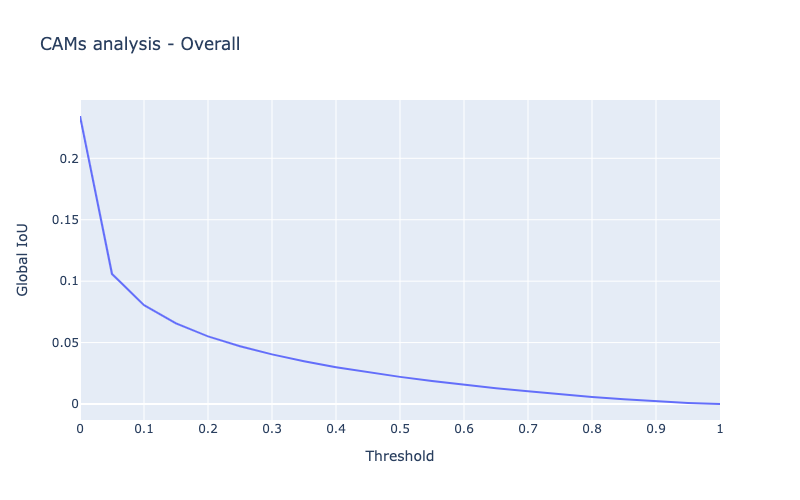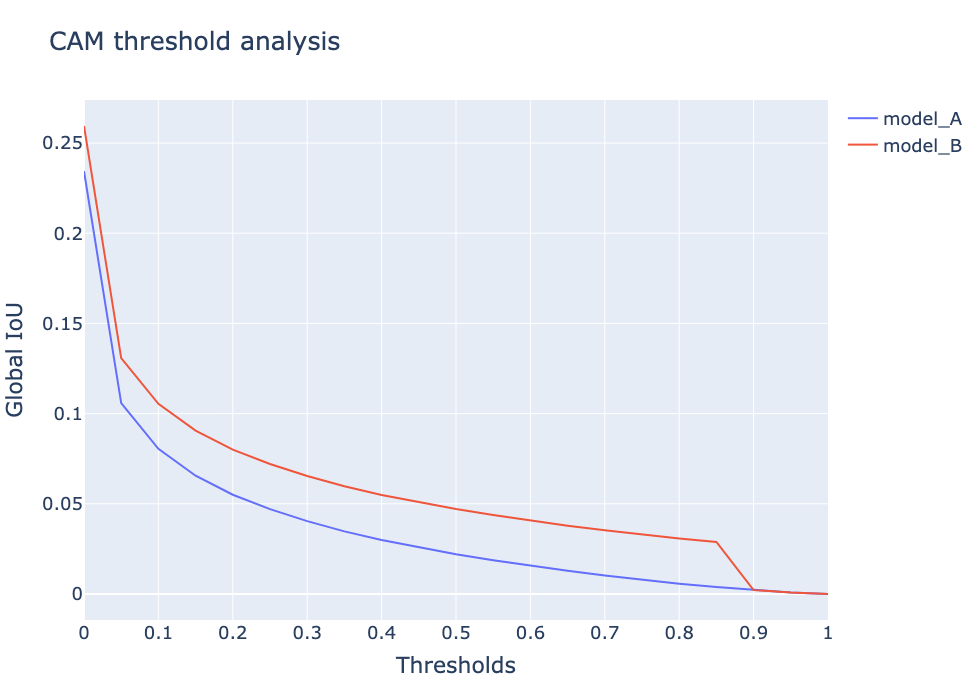CAMs
Table of contents
analyze_cams()
It provides the analysis of the model CAMs at different thresholds for the entire data set.
Parameters
- metric
Metrics, optional- Evaluation metric used for the analysis. If not specified, the default one is used.
(default is None) - show
bool, optional- Indicates whether the plot should be shown or not. If False, returns the results as dict.
(default is True)
Example
Classification
from odin.classes import AnalyzerCAMs
my_analyzer = AnalyzerCAMs("my_classifier_name", my_CAMs_dataset)
my_analyzer.analyze_cams()

Models comparison
Example
Classification
from odin.classes import ComparatorCAMs
my_comparator = ComparatorCAMs(dataset_gt_param, classification_type, models_proposals)
my_comparator.analyze_cams()

Tasks supported
| Binary Classification | Single-label Classification | Multi-label Classification | Object Detection | Instance Segmentation |
|---|---|---|---|---|
| yes | yes | yes | no | no |
analyze_cams_for_categories()
It provides a per-category analysis of the model CAMs at different thresholds.
Parameters
- categories
list, optional- List of categories to be included in the analysis. If not specified, all the categories are included.
(default is None) - metric
Metrics, optional- Evaluation metric used for the analysis. If not specified, the default one is used.
(default is None) - show
bool, optional- Indicates whether the plot should be shown or not. If False, returns the results as dict.
(default is True)
Example
Classification
from odin.classes import AnalyzerCAMs
my_analyzer = AnalyzerCAMs("my_classifier_name", my_CAMs_dataset)
my_analyzer.analyze_cams_for_categories()

Tasks supported
| Binary Classification | Single-label Classification | Multi-label Classification | Object Detection | Instance Segmentation |
|---|---|---|---|---|
| no | yes | yes | no | no |